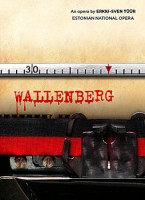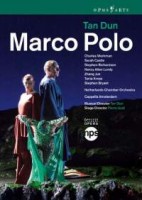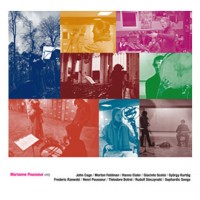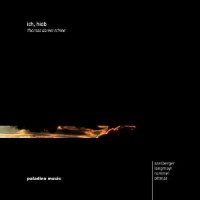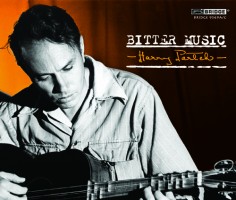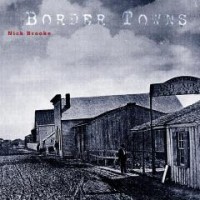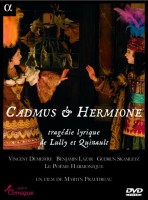Armchair Operas 8.
|
Grant Chu Covell [February 2013.] Erkki-Sven TÜÜR: Wallenberg (2001). Cast includes: Jesper Taube, Mati Turi, Vahur Agar, Priit Volmer, Jassi Zahharov, Helen Lokuta, Annaliisa Pillak, Juuli Lill, et al. Estonian National Opera Symphony Orchestra, Arvo Volmer (cond.). Estonian Record Productions ERP 1808 (1 DVD) (http://www.erpmusic.com/). A week spent in Stockholm put me near the Raoul Wallenberg memorial, sited within view of the capitol’s water and synagogue. Easy to miss at first, the granite sphere soon becomes a landmark. Familiarity with Tüür’s subject enables comprehension of this opera’s plot. The first act reveals why Wallenberg rescued Hungarian Jews by providing them Swedish passports. The second act relates Wallenberg’s disappearance after the Soviets invaded Budapest at WWII’s end. At just under two hours, the brisk pacing offers much to savor. Characters costumed as Christ, Elvis and Ronald Reagan drift through with meaningful roles. Most memorable are two stonewalling Russian officers (Urmas Põldma and Vladislav Horuzhenko) with their mustaches, wigs and microphones. Tan DUN: Marco Polo (1996). Cast includes: Charles Workman, Sarah Castle, Stephen Richardson, Nancy Allen Lundy, Zhang Jun, Tania Kross, Stephen Bryant, Mu Na. Netherlands Chamber Orchestra, Cappella Amsterdam, Tan Dun (cond.). Opus Arte OA 1010D (1 DVD) (http://www.opusarte.com/). I expect that in years to come audiences will wonder why anyone bothered with such a fine and detailed revival. Then again, perhaps the same could be said of any operatic endeavor. With the composer fronting a team including director Pierre Audi and set/light designer Jean Kalman, this is a definitive Marco Polo. However Paul Griffith’s words – please, let’s not call this a libretto – combined with Tan Dun’s slack blending of East and West is patently absurd. Seeing it on DVD, I am not sure what I admired before, given the visuals reveal a threadbare scenario. It takes two characters to portray the famed Venetian explorer. Marco (Workman) and Polo (Castle) bump through different places and times encountering Kublai Khan, Dante, Scheherazade, Gustav Mahler, Shakespeare and Li Po. If the “opera within an opera” aspires to reflect a non-Euclidean view of time and space, then so be it, pretentious muddle notwithstanding. As much as the Mahler character amused, watching Marco / Polo swirl around the Austrian was silly. Certainly Chinese opera musician Zhang Jun brings a fresh arsenal of skills to Western opera; however, Tan Dun’s zealous pursuit of new for newness’ sake diminishes everything. A mini documentary, The Music of Tomorrow, reveals everyone’s dedication and the players’ admirable determination. A slide-show synopsis inadvertently underscores the opera’s illogical structure. “Only.” John CAGE: The Wonderful Widow of Eighteen Springs (1942)*; Experiences No. 2 (1948). Morton FELDMAN: Only (1947). Hanns EISLER: Von der Freundlichkeit der Welt (1954)*. Giacinto SCELSI: Hô 1 and 4 (1960). György KURTÁG: Lettre d’Epicure*. Henri POUSSEUR: Mnémosyne (1968); Un jour. Frederic RZEWSKI: Hungry Child*. Théodore BOTREL: Lustukru*. Rudolf SIECZYNSKI: Wien Wien nur du allein (1914). TRAD: Four Sephardic Songs*. Marianne Pousseur (voice), Maxime Echardour* (perc). Sub Rosa SR278 (1 CD) (http://www.subrosa.net/). Pousseur sums up her program’s conceit: “I like to listen to music in places that haven’t been designed for that. I like when music mixes in with noise.” Pousseur isn’t actually performing in places unaccustomed to music (a school, a church, etc.), it’s rather that she performs without a focused audience so that backgrounds (noisy children, bells) merge into the presentation. The sites include a car, forest, church, school, gallery, and train station. The recordings capture echoes and noise that fits well with Pousseur’s naturalistic, almost conversational delivery. Rzewski’s simple setting of Langston Hughes (“Hungry Child, I didn’t make this world for you/You didn’t buy any stocks in my railroads/…”) chills to the bone. Why isn’t it better known? Ironically, in order to completely savor Pousseur’s intended ambiance, it’s necessary to listen in a quiet place. Thomas Daniel SCHLEE: Ich, Hiob, Op. 68 (2006/07). Cast includes: Kurt Azesberger, Ursula Langmayr. Martin Rummel (vlc), Dávid Ottmár (tpt), Veronika Schulz (vln), Matthias Schulz, Wolfgang Zuser, Matthias Eckart, Anneliese Fuchsluger (fls). Paladino Music PMR 0002 (2 CDs) (http://www.paladino.at/). Arts administrator and organist Schlee’s “sacred opera” tells Job’s story. The frugal scoring concentrates the action in upon two singers sparsely accompanied by a cello, trumpet, violin and four flutes (doubling two piccolos and an alto flute). The flute quartet marks the first instrumental appearance with hushed breath sounds, setting the stage for something unconventional. Infrequent chords suggest Messiaen, whose classes Schlee audited. Job (Azesberger) does all the heavy lifting in this bleak landscape. The cello accompanying Job manages to make the singer appear even lonelier. Without visual clues, anticipation propels the 40:50 + 39:49 action. When the flutes play, or the violin-plus-Angel (Langmayr) appear, it’s easy to imagine lost characters wandering in the desert. Harry PARTCH: Bitter Music (1935-36, rev. 1940). PARTCH: John Schneider (voice, Adapted Viola, Adapted Guitar), Garry Eister (Objective Voice, pno), Richard Valitutto (pno), Paul West (kithara). Bridge 9349A/C (3 CDs) (http://www.bridgerecords.com/). Constructed like a radio play, this enactment of Partch’s R-rated diary reveals his itinerant life, 1935-36, when he not only turned his back on traditional music and scales, but any community which might have been sympathetic to nurturing his innovations. Encounters with transients, W.B. Yeats and a Chopin tune are given equal weight, though Partch prefers to dwell upon ribald escapades. Schneider carries the entire production, mellifluously channeling Partch’s voice over which sound effects and music abruptly intrude. This huge Partch dose (70:06 + 61:55 + 64:35) unbuttons an American vista which most of us would have ignored. We’re lucky therefore to have this ribald document, rescued from microfilm and enlivened by the PARTCH ensemble. We hear Letter from Hobo Pablo in its original poetic context. A 3:52 lagniappe offers Partch himself recalling Bitter Music’s days. Nick BROOKE: Border Towns (2010). Performers include: Laura Bohn, Michael Chinworth, Chris Giarmo, Laryssa Husiak, Kamala Sankaram, Laura Stinger, Dax Valdes. Innova 826 (1 CD) (http://www.innova.mu/). Imagine singing along to the car radio with the top down, but instead of a car, you’re in an amusement park ride that passes through multiple states and periods at lightning speed. Demonstrating Americana’s variability, Brooke has blended tunes and effects into a complex collage. A band of well-oiled performers precisely accompany the sound track. Split-second jumps lurch between Sinatra, Copland, Springsteen, Marian Anderson, Chinese percussion, mariachi, etc. Brooke’s timing is as uncanny as his humor is perverse. It’s audacious, high-energy stuff. In this CD format we can only imagine the tight choreography. My entry point for Border Town was audio only. Glimpses of the Internet’s samples actually disappointed. It works better as a radio play. Jean-Baptiste LULLY: Cadmus & Hermione (1673). Cast includes: André Morsch, Claire Lefilliâtre, Arnaud Marzorati, Jean-François Lombard, Isabelle Druet, Arnaud Richard, Camille Paul. Orchestre, Choeurs et Danseurs du Poème Harmonique, Vincent Dumestre (cond.). Alpha 701 (1 DVD) (http://www.outhere-music.com/alpha). Here’s an outstanding and lovely production that demonstrates why the French Baroque continues to enthrall. Filmed in 2008 at l’Opéra Comique, the tiny stage, lit as if from candle footlights, emphasizes lavish costumes and delicate gestures. Quinault’s libretto, after a tale in Ovid’s Metamorphoses, offers an obligatorily godly Louis XIV as Apollo slaying a python, plus a love story between Cadmus, king of Thebes, and Hermione, daughter of Venus and Mars. The Poème Harmonique executes with great finesse. Cameras rarely dwell on the musicians, who seem to be enjoying their tasks.
Brooke, Cage, Eisler, Feldman, Kurtág, Lully, Partch, Pousseur, Rzewski, Scelsi, Schlee, Tan Dun, Tüür
[More
Brooke, Cage, Eisler, Feldman, Kurtág, Lully, Partch, Pousseur, Rzewski, Scelsi, Schlee, Tan Dun, Tüür]
[Previous Article:
Snapshots – Blur: Shulamit Ran]
[Next Article:
Maestro di Suoni e Silenzi: Necessary Nono 3.]
|
